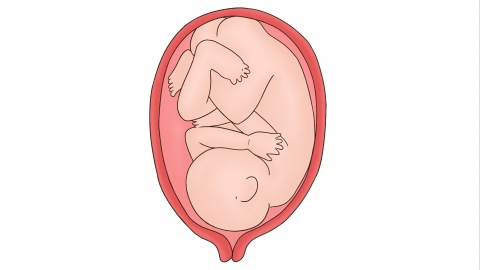What does it mean at 20 weeks of pregnancy that the fetal head is located at the top of the uterus?
Under normal circumstances, at 20 weeks of pregnancy, the fetal head being located at the fundus usually indicates a breech position, which is a normal physiological phenomenon. The detailed explanation is as follows:

At 20 weeks of gestation, when the fetal head is positioned at the uterine fundus, it means that the fetus's head is pointing toward the top of the uterus while the buttocks are directed toward the lower segment of the uterus—this is one of the common fetal positions during pregnancy. At this stage, the fetus has relatively ample space to move within the uterus, and its position is not yet fixed. The fetal head's location may frequently change with fetal movements, which is not considered abnormal. Because the uterine fundus offers more space, the fetus naturally tends to extend into a head-up posture. As gestational age increases, fetal growth gradually reduces available space, and most fetuses will spontaneously turn to the normal cephalic (head-down) position after 28 weeks of pregnancy.
No deliberate intervention for fetal positioning is needed, and blind attempts at positional correction should be avoided. Count fetal movements at the same time each day and monitor whether fetal activity is regular. Attend routine prenatal checkups, using ultrasound to track changes in fetal position and development. Maintain moderate physical activity, such as walking, which helps promote natural fetal movement. Eat a balanced diet to ensure adequate nutrition, avoid excessive fatigue, and maintain a positive mental state. If the fetal position remains breech after 28 weeks, promptly consult your doctor and follow professional guidance to take appropriate measures.




